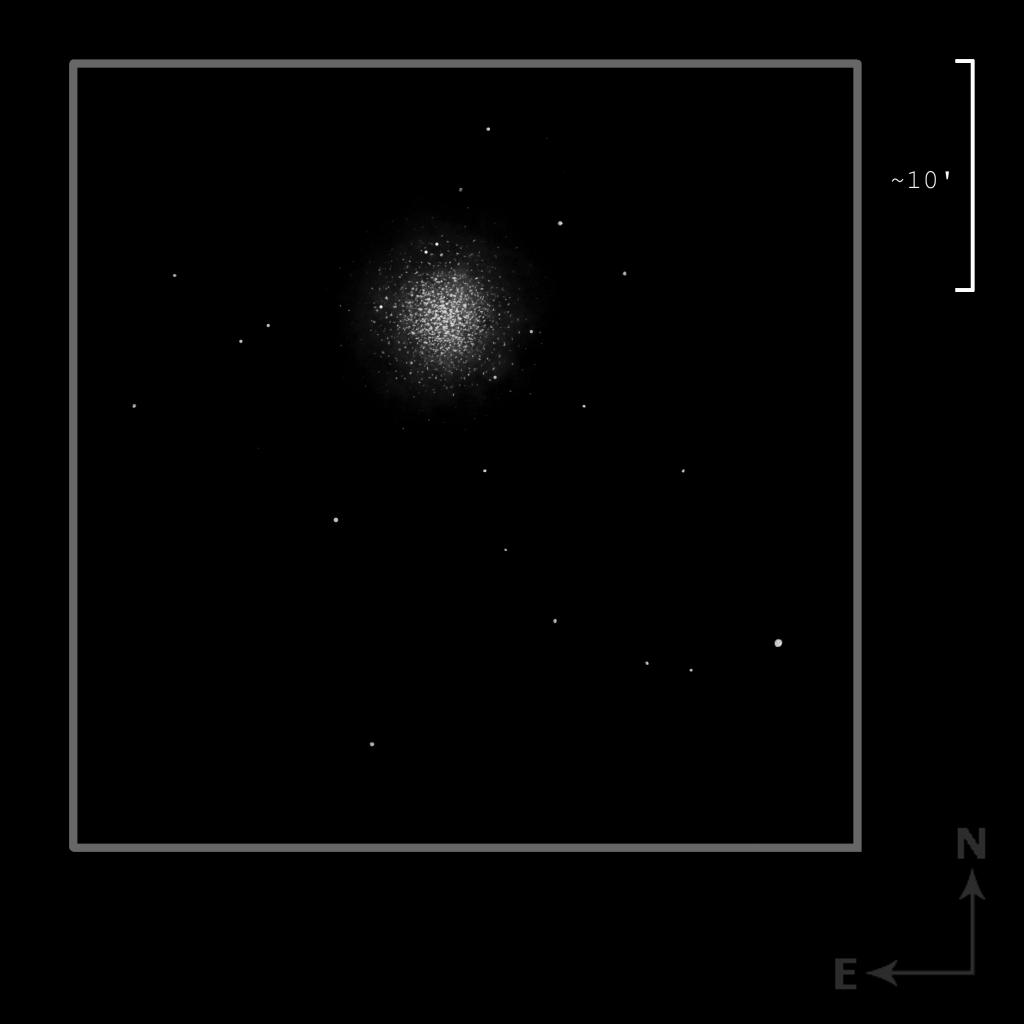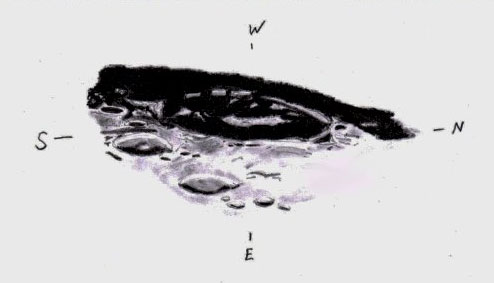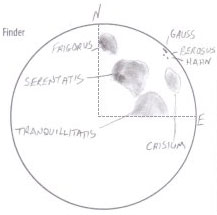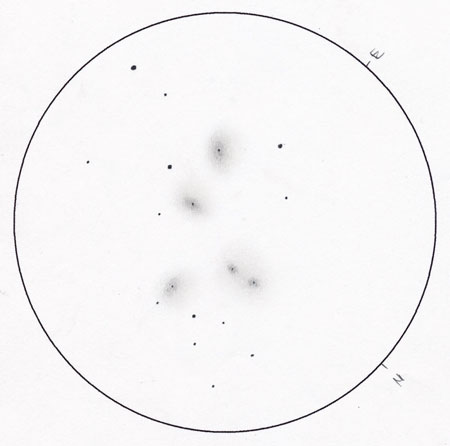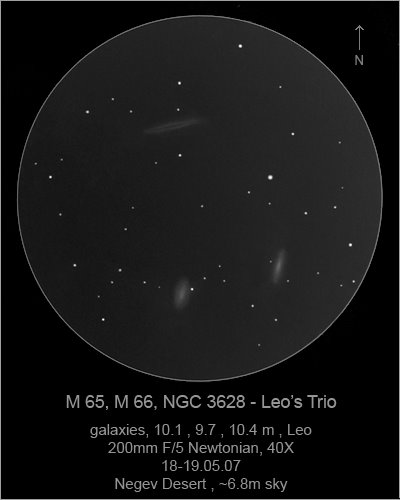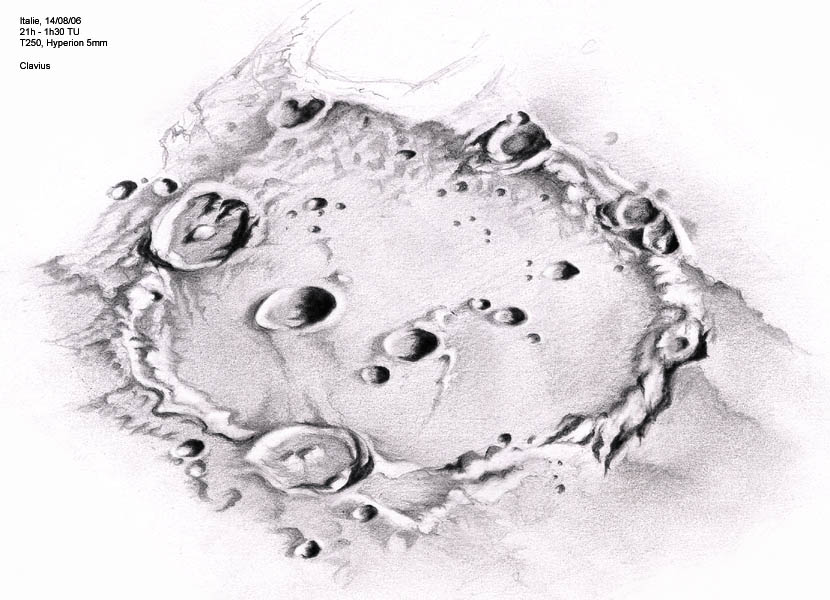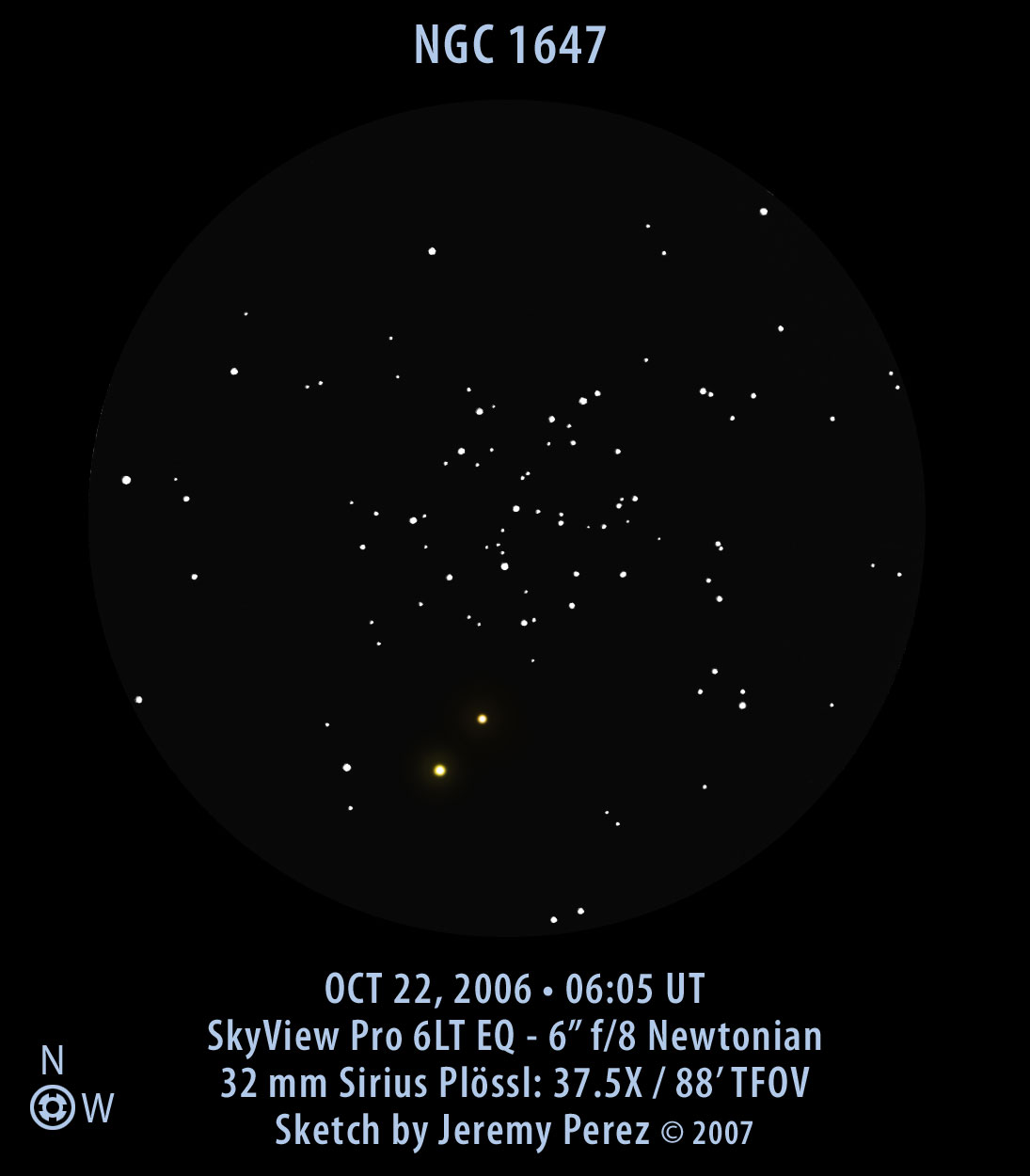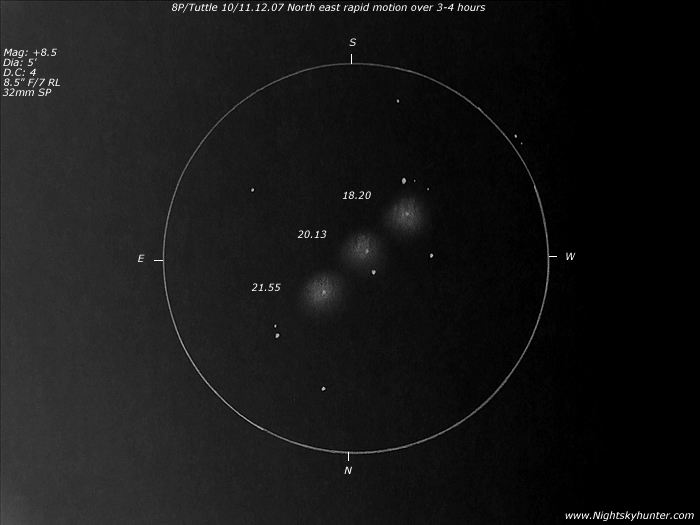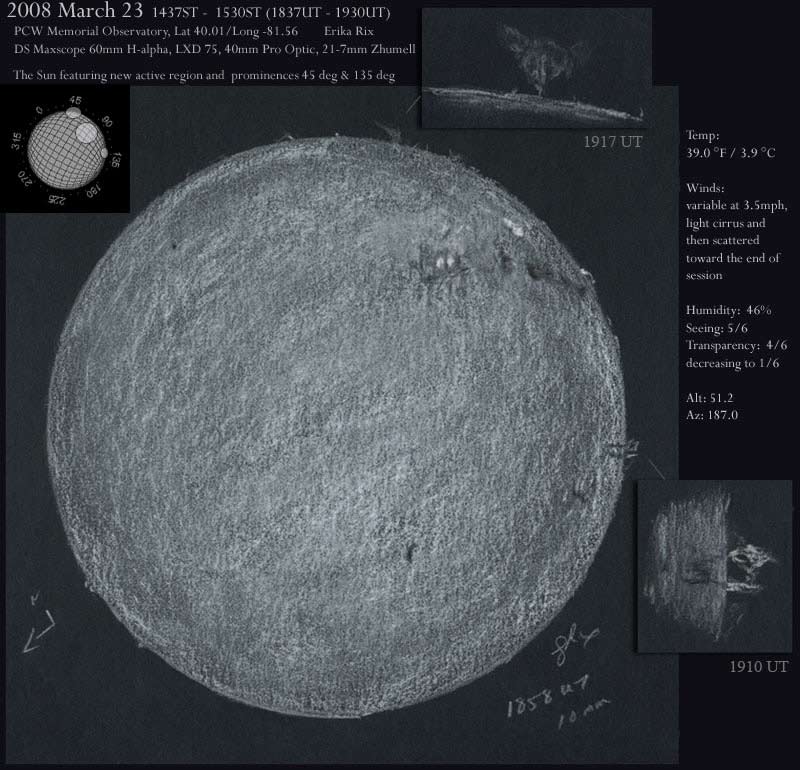
Sun in H-Alpha
By Erika Rix
2008 March 23, 1437ST – 1530ST (1837UT – 1930UT)
Solar H-alpha
PCW Memorial Observatory, Zanesville, Ohio, USA, Lat: 40.01 / Long: -81.56
Erika Rix
Temp: 39.0 °F / 3.9 °C
Winds: variable at 3.5mph, light cirrus and then scattered toward the end of session
Humidity: 46%
Seeing: 5/6
Transparency: 4/6 decreasing to 1/6
Alt: 51.2 Az: 187.0
Equipment:
Internally double stacked Maxscope 60mm, LXD75, 40mm ProOptic Plossl, 21-7mm Zhumell,
The new active region on the eastern limb was the first thing I noticed with the 40mm eyepiece. Dropping down to 7mm and adjusting the Etalon made this area rich with details. The seeing today was wonderful allowing higher magnification. A thick clumpy filament reached all the way to the limb, almost coming to a point before reaching out into the darkness of space for a very bright, flattened prominence reaching northward. The view was so three dimensional in appearance that it almost felt like you could reach in with your finger through the eyepiece and hook underneath the filament to pull it towards you. There were many tiny spicules on this eastern limb.
About 30 degrees inward from the East were two bright plage, separated only by a thin darkened line. I didn’t notice a sunspot within it in h-alpha and didn’t take the time to pull out my white light filter rig for a better look. The eye-catching view was when I increased the contrast to show a network of what I believe to be fibrils extending out from a thin filament that was running East to West. The fibrils seemed to extend almost north to south and the whole area looked like an incision with sutures. This area was just south, almost touching the plage and I wouldn’t have noticed it at all had I not tweaked the Etalon for more details to be pulled out.
Going towards the eastern limb, there was a longer area of plage that almost resembled the lunar crater Schiller, one giant footprint on the solar surface.
Although the eastern hemisphere was full of proms, mainly small vivid ones with a few brighter, large ones, there was a gem at the NE limb that was barely visible. I actually skipped over it completely the first time scrolling around the limb. When I moved the FOV, however, I detected a very large faint blotch hovering over the limb. After adjusting the Etalon, zooming in and out, I finally was able to make out this very fibrous prominence. It appeared to only be connected to the limb with one very narrow stalk, and at the beginning of the session, jutted dramatically to the North. Later, when I did a close up sketch of this prom, it actually spread out to the either side with almost a flat top. Truth be told, it reminded me of a clown’s hairdo.
When my session ended, I stood up against the drop down southern wall of the observatory to finish my cup of tea, admiring the countryside and the warmth on my back. Signs of spring are finally here, I thought to myself afterwards as I walked back up the stone steps to the house in my green and yellow flowered rubber gardening shoes, carrying my empty cup and sketchpad.

